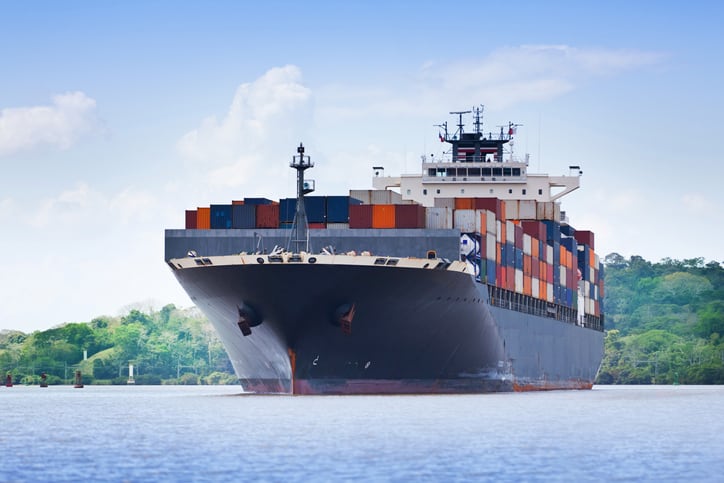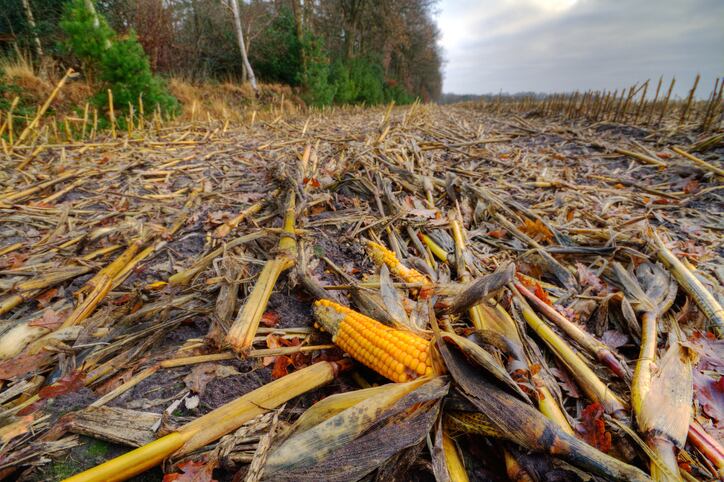Tensions in the Red Sea, causing vessels to avoid the passage through the Suez Canal, are hitting European trade in particular, where there are fears the disruption could raise the costs of imported food and agricultural products.
US agricultural trade, however, is also being impacted by a severe drought in Panama that began last year. Analysis from Sandro Steinbach of North Dakota State University examines the current challenges in global shipping and their impact on US agriculture highlights. The current water levels at Lake Gatún, which feeds into the Panama Canal, an essential trade corridor linking the Atlantic and Pacific Oceans, is about 7% below the five-year average, he stated. While some improvement is anticipated as the rainy season progresses, water levels will remain below average due to strengthening El Niño conditions and predicted droughts in Central America for the remainder of 2024.
The impact of these changes on US agricultural shipments to Asia via the Panama Canal is multifold. Vessels that experience delays may need to wait up to three weeks for a new slot at the canal. This increased waiting time will likely lead to tighter vessel capacity and a consequent rise in spot rates. Some shippers may reroute via Cape Horn or the Cape of Good Hope, resulting in additional shipping costs due to the extra two to four weeks of sailing.
Daily transits through the Panama Canal's locks have decreased by 30% and waiting times for transit escalated from an average of five days to more than three weeks by January 2024.
The combined effects of the Panama Canal and Suez Gulf disruption mean ocean freight rates have increased dramatically, with the average cost of transporting a standard container rising from about $US700 in November 2023 to over $US1,900 in January 2024.
US grains and oilseeds exports at risk
This development is particularly concerning for US agricultural exporters. About 40% of North American container vessels and bulk carriers pass through the Panama Canal annually, carrying key agricultural products such as grains and oilseeds. The Panama Canal is vital to the timely and cost-effective transportation of US exports to Asia. Over 26% of soybeans and 17%of corn was exported via this route in the fiscal year 2022. These exports are crucial, particularly considering China’s dependency on grain imports, which may increase due to expected smaller crops in other regions like Australia and South America – themselves exposed to negative effects of El Niño.
What to expect in 2024?
Given these conditions, the 2024 outlook suggests continued challenges for US agricultural exports, particularly for critical commodities such as corn and soybeans. “The US grain export season typically begins in mid-October and lasts through May of the following year, and persistently low water levels at the Panama Canal could significantly impact these exports,” warned Steinbach’s analysis.
Companies must adapt to the increasingly uncertain global market environment, he said.
This adaptation may involve diversifying logistical plans, exploring alternative shipping routes, adjusting schedules, and possibly seeking new markets to mitigate the risks of reduced canal capacity and disruptions in key shipping lanes.
“The focus will be on developing more resilient and adaptable trade practices, underlining the need for flexible supply chain solutions that can withstand the pressures of environmental changes and geopolitical instabilities,” he stated.
White space opportunities
Speaking with AgTechNavigator, he listed the types of solutions and innovations that could be leveraged to allow the sector to future-proof itself from the type of vulnerability that the current geopolitical and environmental crises have exposed.
Local vs Regional vs Global Supply Chains: Balancing local, regional, and global supply chains enhances risk mitigation and resource optimization.
Predictive Machine Learning: Utilising machine learning for forecasting and inventory management boosts efficiency and adaptability.
Friendshoring and Nearshoring: Strengthening closer trade ties reduces reliance on distant markets, lowers costs, and improves security.
Trade Liberalisation: Diversifying trade partners through liberalisation stabilises supply chains and opens new markets.
Enhancing Transparency and Traceability: Advanced data analytics improve supply chain transparency, ensuring regulatory compliance and consumer trust.
Carbon Footprinting: Tracking carbon footprints is key for environmental impact reduction and market differentiation.
Access to Certain Markets: Sustainable supply chain practices are essential for entry into markets with strict environmental and quality standards.
Improved Logistics and System Resilience: Investing in efficient transportation and resilient infrastructure safeguards against disruptions.
He told us: “In conclusion, by integrating these solutions and innovations, US agricultural trade can build supply chains that are not only more sustainable and flexible but also more robust and competitive in the global market.”
Reference:
Steinbach, S., Y. Yildirim and X. Zhuang. "Ripple Effects of Shipping Lane Disruptions on U.S. Agriculture." farmdoc daily (14):19, Department of Agricultural and Consumer Economics, University of Illinois at Urbana-Champaign, January 29, 2024.





